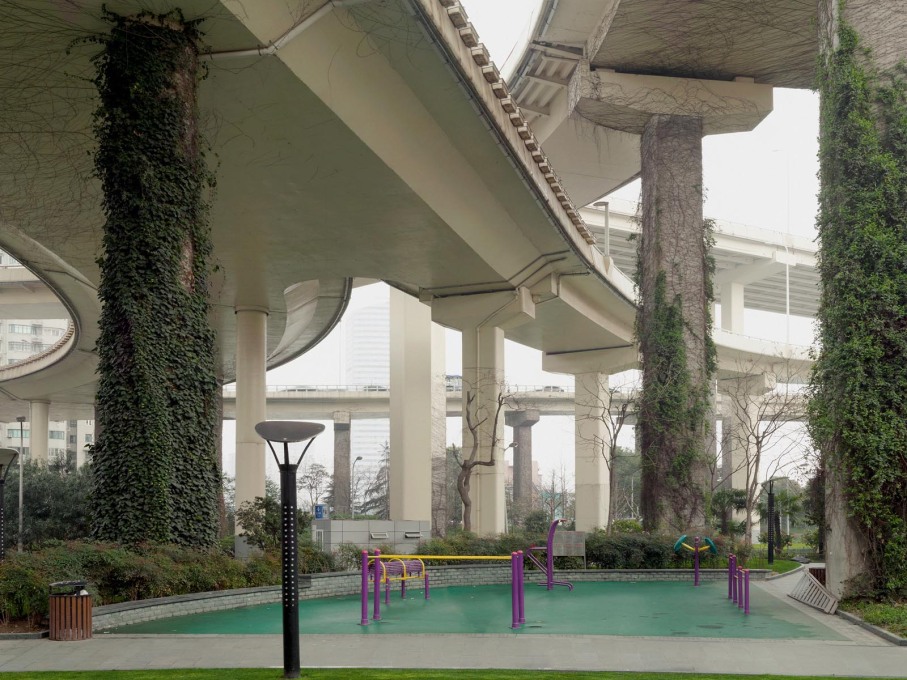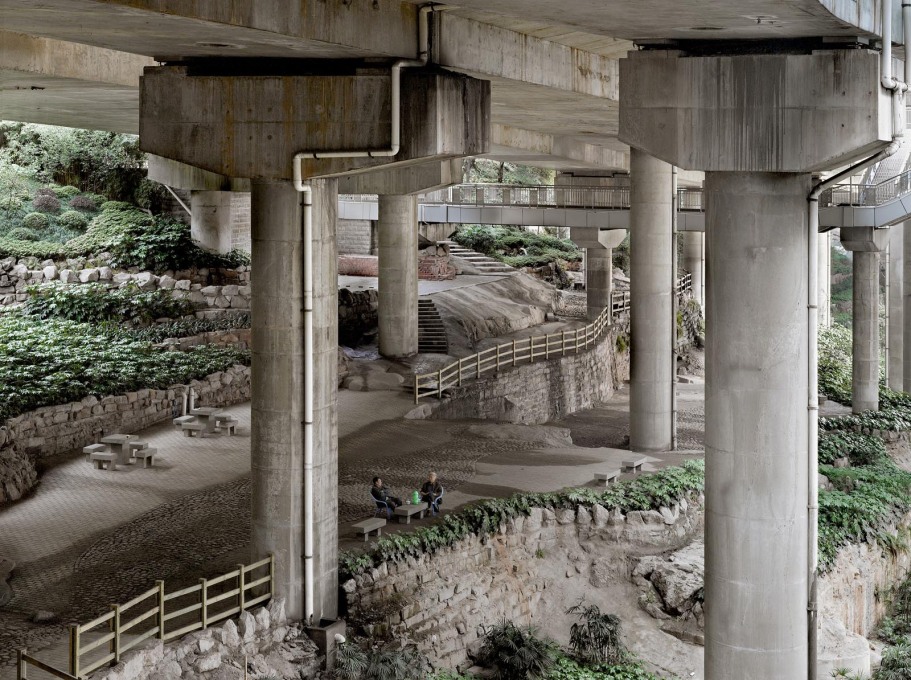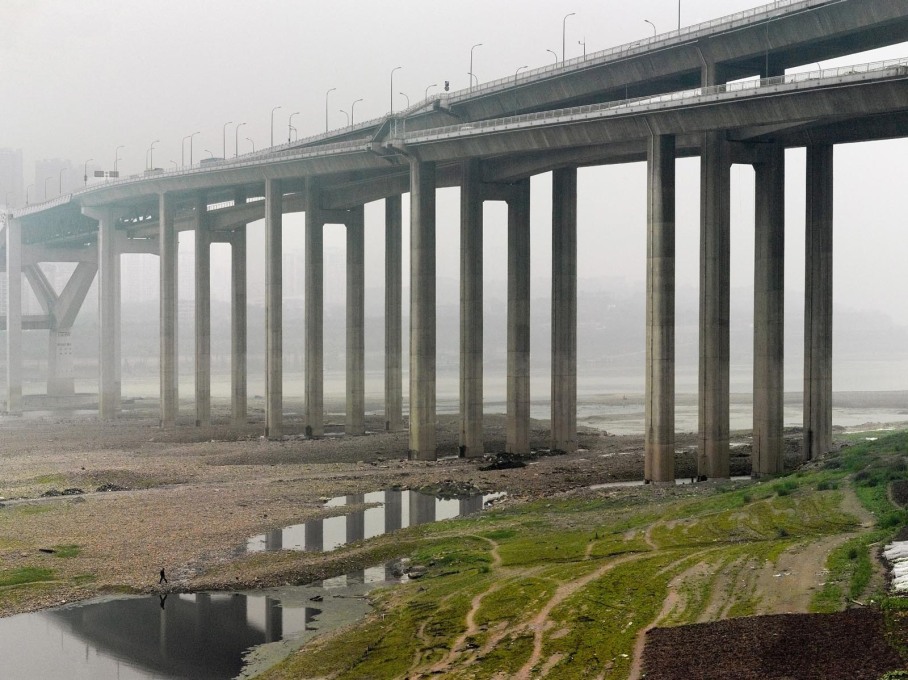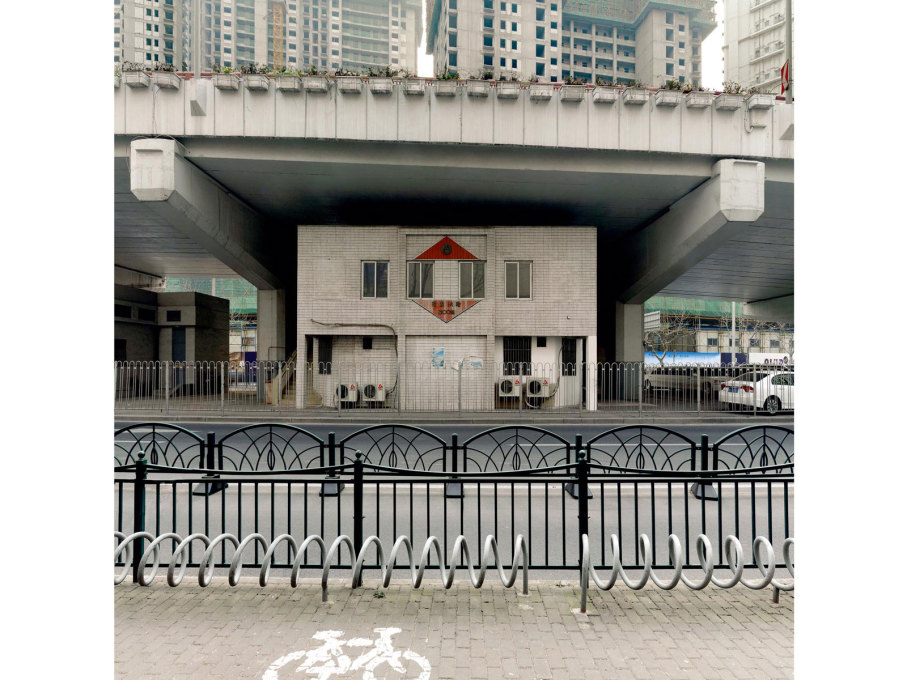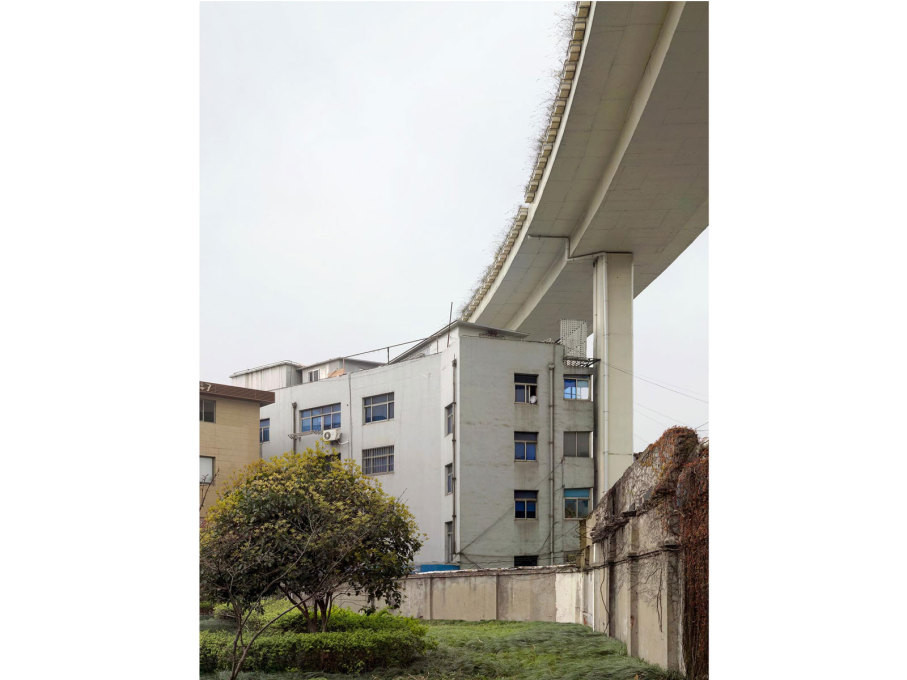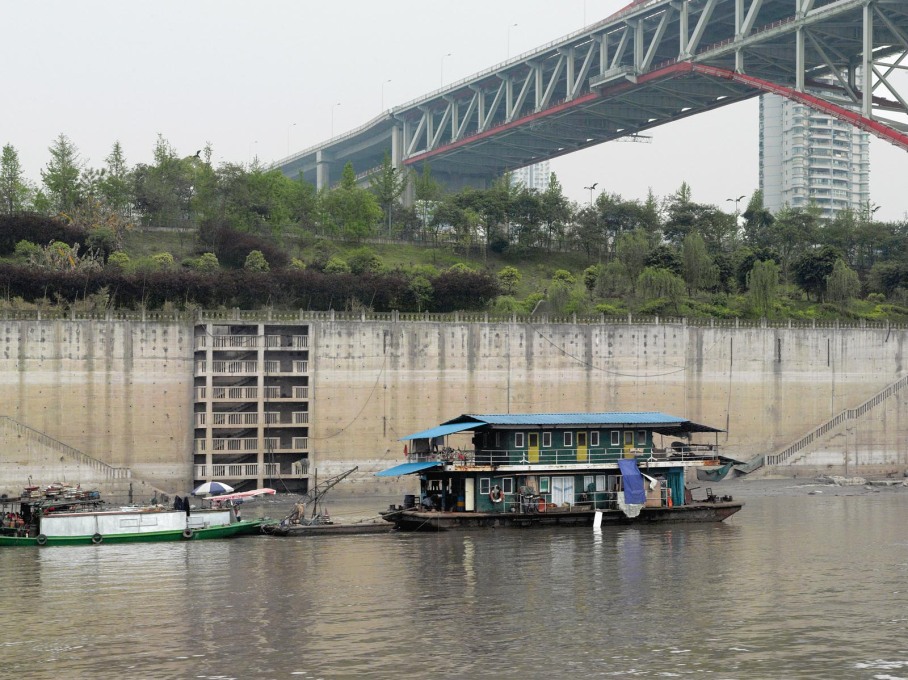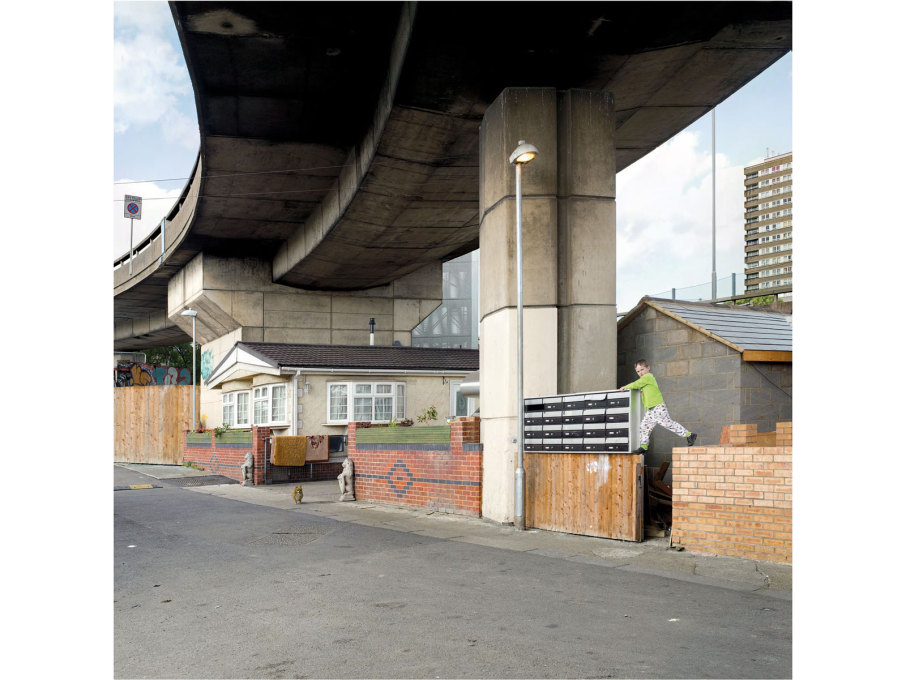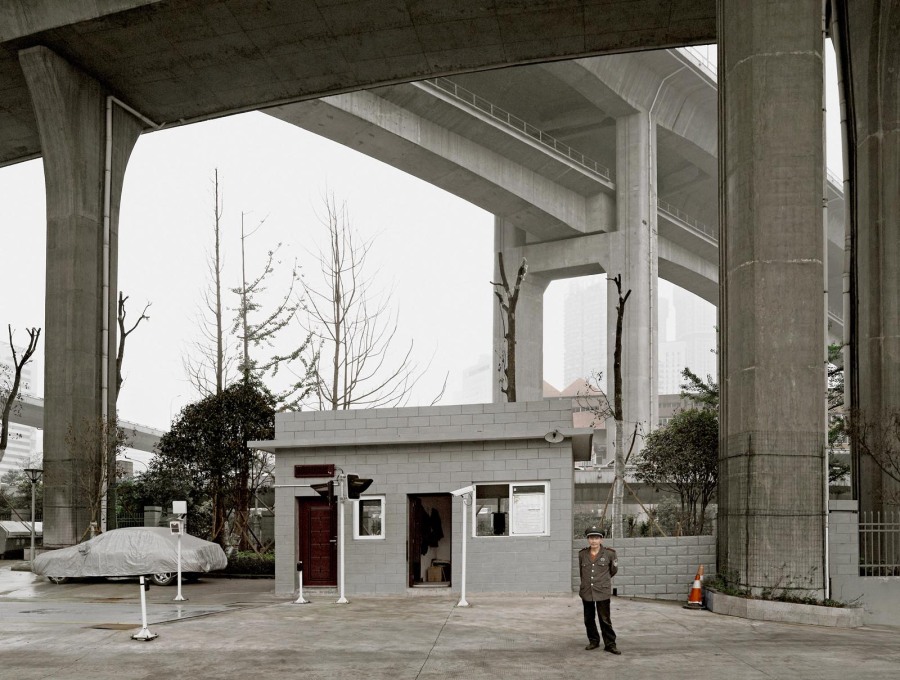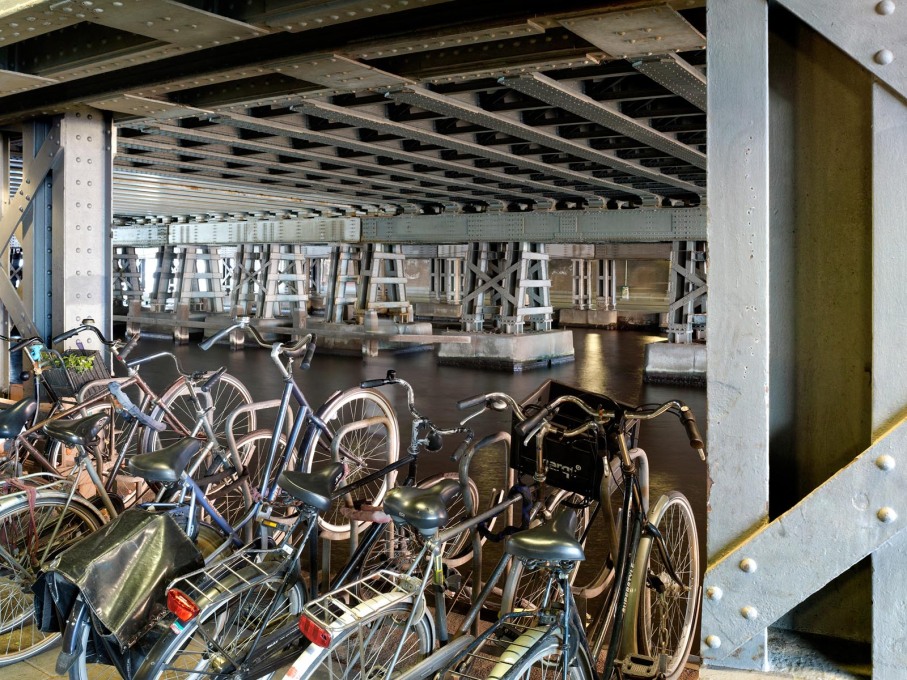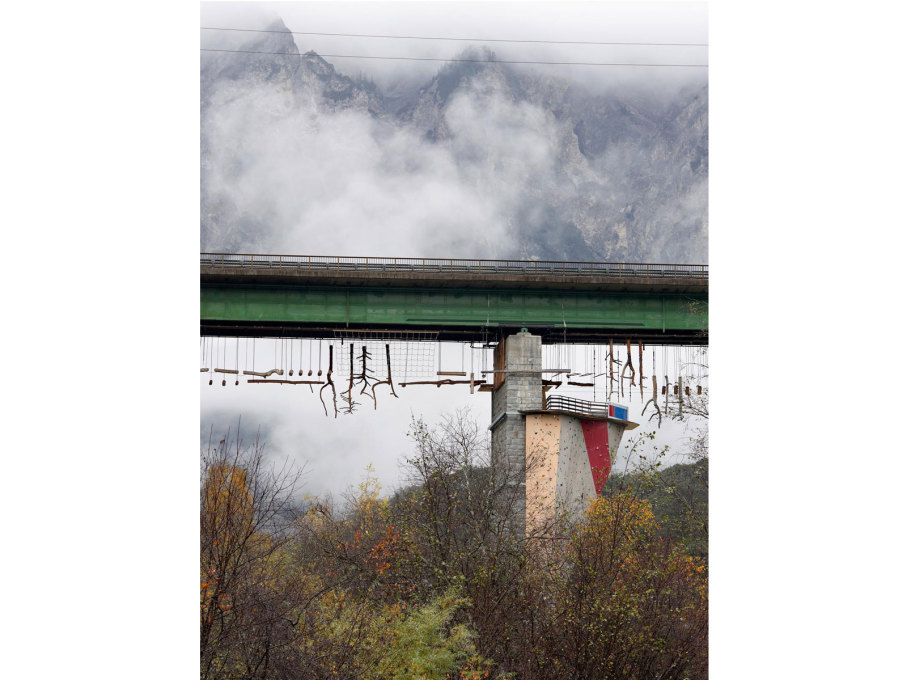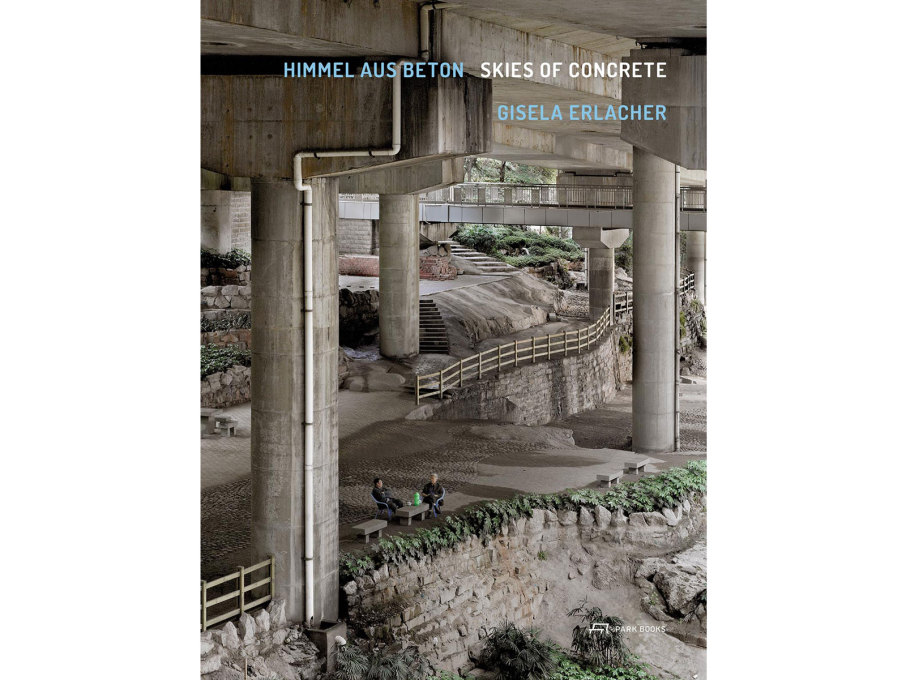For the past 20 years, the Austrian photographer Gisela Erlacher has dedicated much of her work to topics of urban and suburban space. Her most recent project Skies of Concrete, has just been published by Park Books in Switzerland. It features a collection of images of spaces underneath highways and flyovers in China, Britain, the Netherlands and Austria. Her images reveal not only her fascination with these massive concrete constructions but also her interest in how the rather uncomfortable spaces below are being used or treated – how people try to live, work and play in these left-overs from our need for speed and mobility. Florian Heilmeyer spoke to her about the project.
How did you arrive at the theme of Skies of Concrete?
I took the first of these images several years ago in Vienna. It was of a former suburban train station that had been converted into a house, jammed between two bridges across the Danube. It was a situation that said a lot about the condition of our society. Then I encountered the topic again in China: in Chonqqing there are a number of spectacular highways due to the nature of the hilly landscape, and in Shanghai as well, where the increasing density of the city has resulted in multi-storey highways. You don’t need much imagination to understand the spatial pressure people there live under.
What kind of situations in particular have you sought out for this series?
The kinds of situations I find interesting are those in which what is built there could also stand alone as well. This generates a tension with what is above these spaces. It is in fact two images – a double image, or montage, that is generated by reality and not by later manipulation of the image.
You have photographed very different spaces in China, the Netherlands, London and Austria. What similarities and what differences did you notice between them – and why, in your view, do they belong together in this book?
In Chinese cities you find these kinds of situations in the centre, in European cities they tend to be on the periphery. What is particularly noticeable is that in China it is much more everyday, normal activities and functions: workers’ housing, teahouses and restaurants under bridges are not unusual there. In Europe, in these more peripheral urban situations, most of the structures under bridges are things like facilities for young people such as sports grounds and skate parks, or otherwise parking and storage facilities. What connects all these spaces is the attempt to utilise them. Even though such spaces are far more visible, central and perhaps even more common in Asia, it is not purely an Asian theme.
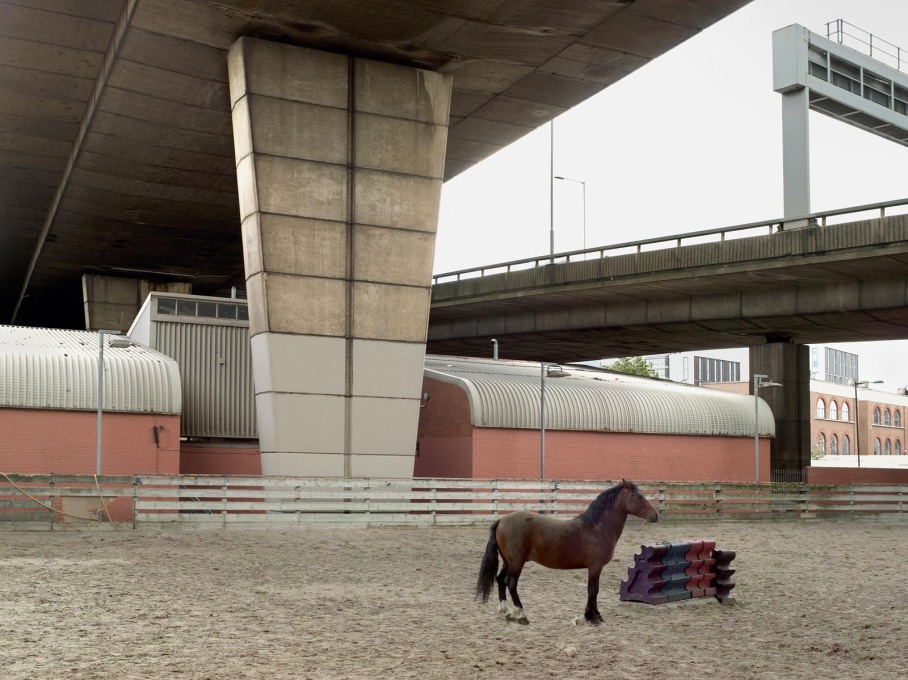
Looking at your photos here, I remain undecided as to whether you are concerned with a critical view of the three-dimensional urbanisation (or concreting) of our world, or are more driven by an enthusiasm for the human ability to reside and socialise in the most inhospitable places…
Both I think, in parallel: on the one hand I ask myself what kind of cities we impose on ourselves and what price mobility demands of us when we prioritise functionality and efficiency. On the other hand, I marvel at, for example, the ingenuity and the will of a businesswoman to construct a (probably not entirely legal) food stall underneath a motorway.
How would you compare the Skies of Concrete series to the rest of your photographic work?
I tend to seek out the wild, the unplanned and the accidental in the more or less consciously designed urban environment – and the absurd potential within such situations.
– Interview by Florian Heilmeyer
Gisela Erlacher is a photographer based in Vienna. After a degree in psychology and then studies in photography and cinematography at the University of Music and Performing Arts in Vienna she turned her attention entirely towards photography. She has been has been widely exhibited and published. Her latest book Skies of Concrete was published by Park Books in June 2015.




